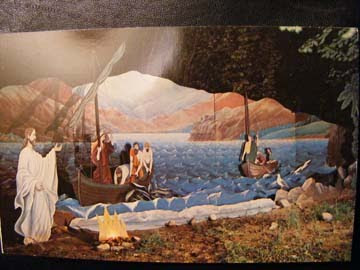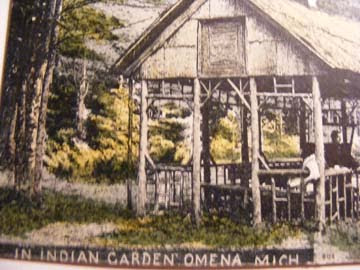I’ve decided to begin a new post to continue discussion on discussion (yes, that’s what I mean) of
The Help, by Kathryn Stockett. I did go back and add into my last post a link (
here it is again) to a review of the book, not only for the review itself but, much more, for the very lengthy train of comments that follows the review, comments left by American and British readers, native-born and immigrant Americans, black and white readers, women (mostly), men (a significant number), Northerners and Southerners both, and that’s where I want to begin today. Reading these comments held me enthralled for hours on Thursday morning, and I recommend the experience, especially if you are ever tempted to think that any one group of people, however that group is defined, will respond
en bloc to any book written. If you visit the site and have the time and patience to read through all the comments (which I cannot recommend strongly enough), eventually you’ll come to a point where commentators are coming back to respond to comments made in response to their earlier comments, and that’s where the conversation becomes more difficult but, I believe, all the more worth pursuing for that reason. One of the black women who became a major voice in the conversation has
her own website.
Whatever you thought of the book (if you read it), in my opinion the cross-racial, cross-gender, cross-generational, etc. conversation is much more riveting. We do need to talk to each other, to people who have had different experiences from ours, to people whose opinions do not agree with ours. Only if we can stay in the conversation, even when tempers flare, voices rise and tears start up--we can’t control others and can’t always control ourselves--is there hope for our country and for our world. I believe that.
So now, having opened up the can of worms with the question in my previous post (Can this white author portray the experience of black women?), I’ll stick my neck out and put my opinion of the book on the line, first making clear what I’m
not saying. I’m
not saying writers of fiction can only succeed in offering the experience of their own lives, i.e., that fiction should be given up and only autobiography written and published.
Neither am I saying that a writer has no “right” to imagine a character of the opposite gender, of a different race or ethnicity or religion or sexual orientation or what-have-you. But just as freedom of expression exists for writers, it exists for readers, too. Not only reviewers and critics and academics but every ordinary reader, too, has a right to evaluate the success of a work of fiction according to her or his standards, however personal those standards may be.
Now, backtracking:
I approached the book with trepidation. I was wary. My defenses were up. I wondered (this is a point several people made in comments and reviews) why the black characters’ dialogue was spelled out in dialect but not that of the white characters, and all I could think was that maybe a white Southerner like the author doesn’t hear herself as speaking with an accent. A minor point, but it kept my defenses up, so that I questioned other authorial decisions all the way along, and by the time I reached the end of the book I still wasn’t sure what to think about it. I had entered into the story to a degree but not completely. The fate of the characters concerned me, but at the same time there were plot devices I could not fully buy. My resistance, not overcome by the novel itself, was not overcome by the library discussion group, either. Am I just stubborn, or what?
Then I found the California Literary Review site and realized I was not alone and that opinions about this book range all over the map! Reading those comments helped. They also took me into a much larger world of literary and social discussion, and I was moved and enlightened and encouraged by the willingness of readers to share their opinions and to disagree.
So here’s where my thoughts have taken me so far (for convenience and clarity I’ll number the few points I want to make):
1. In general, any writer attempting the point of view of a character with experience way outside the writer’s own has greatly multiplied the difficulties, already considerable, of producing believable fiction. No writer—in our country, at this time in history, at least—is barred from making the attempt. It does take chutzpah and invites more than the average amount of criticism. I have often heard it said of a male novelist, “His women characters aren’t real,” and certain novels by female writers are dismissed by men, either without comment or with a disparaging remark that “Men don’t talk like that.” It isn’t that men are not allowed to create female characters or that women aren’t permitted to create male characters, but that whenever we know the gender of the author we subject the characters of the opposite gender to closer scrutiny in the work. Hence the many female mystery writers who use initials rather than first names. (Fascinating studies have been done with subjects reading short pieces and not knowing the gender of the writers; when gender was revealed, most felt they should have been able to pick up clues to gender, even where they failed miserably. I don’t know if similar race-blind reading/writing studies have been done but would like to know of any out there.)
2. Anyone can say, or any work of fiction, “I don’t believe it.” Years ago I had an acting teacher who told our class that just as we didn’t have to be hens to recognize rotten eggs, anyone could criticize acting, simply by saying it didn’t ring true. The same holds for fiction. If you believe it, it succeeded for you; if not, it didn’t.
3. So what does it take for fiction to succeed, for characters to be believable to readers? As far as I’m concerned, the characters I’m reading about don’t have to be “like me” (how much would I learn if that were the case?), but I do need to feel that the writer has gotten inside the characters, so that I have at least the illusion that I am encountering a person rather than a type. Here the standard I keep coming back to over the years, because my first reading of this novel was such a watershed experience for me as a reader, is James Baldwin’s
Another Country. I maintain that anyone coming to this book with no knowledge of the author’s identity would not be able to say with certainty that the writer was black or white, male or female, gay or straight, because Baldwin was able to inhabit all of his characters with sympathy. They were not simple characters, either. Betty Smith, author of
A Tree Grows in Brooklyn, working with the material of her own life, had a similar ability. You don’t necessarily fall in love with all of Baldwin’s or Smith’s characters, but because of the depth given them by their authors (and here the word ‘author’ takes on its great creative power!), you realize at least part of why they are the way they are, and you grow in understanding.
4. So, finally, I’ll allow that I was disappointed in Stockett’s novel. Characters were recognizable, yes, but for me the third and fourth dimensions were lacking. Why did Minnie put up with physical abuse from her husband? James Baldwin would have given us some insight. Why was Miss Leefolt so cold to her own little daughter? Betty Smith would have let us see a little way into the mother’s hard heart and how it had gotten that way. I can imagine Minnie understanding how demoralizing life is for a black man and knowing that only at home can he have any power, and I can imagine that Mae Mobley’s mother might be unhappy in her marriage or doesn’t have pride in anything she herself has ever done, but I have to do all this imagining on my own, because the author hasn’t done it for me. These are limitations in characterization, and most of the characters are similarly limited. Besides this flaw, along with the very believable general circumstances (historical fact, many of them), there were other plot contrivances that I found unbelievable and/or forced.
So that’s what I think of the book. I’m not arguing with anyone who enjoyed reading it. I enjoyed parts of it myself. It isn’t a book I would recommend, however, given all the other, much better novels that deserve to be read.
What I think of the discussions it has sparked is something else again. The discussions I’ve found online I find very exciting! I left my own comment, saying that
this, all these different people from different backgrounds with different opinions—
this is the movie (probably documentary) that
I want to see, not a film version of the book. “But if there is so much deep discussion because of it, doesn’t that mean the book had to be pretty good?” Someone posed this question to me, and it’s a good question, but my answer is no, I don’t think the quality of discussion depends on the quality of the catalyst.
I can, however, be grateful to the catalyst. Kathryn Stockett had a lot of chutzpah to write the book she did. She is a successful story-teller, with a best-seller under her belt, and now she will have a lifetime to grow as a writer. Meanwhile, for now, the
controversy continues.































































